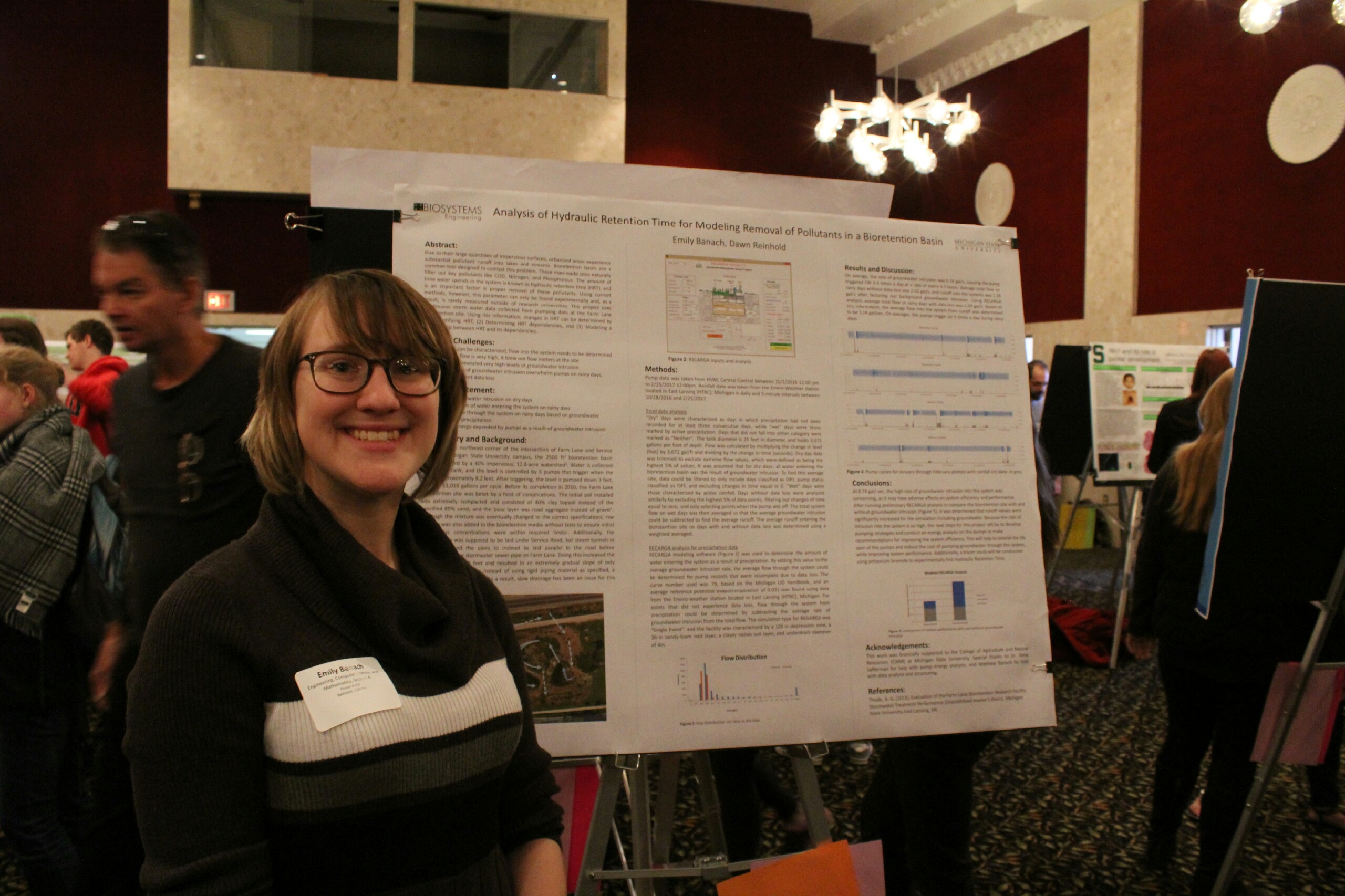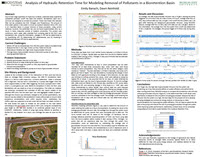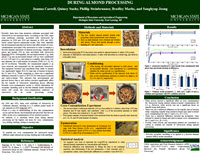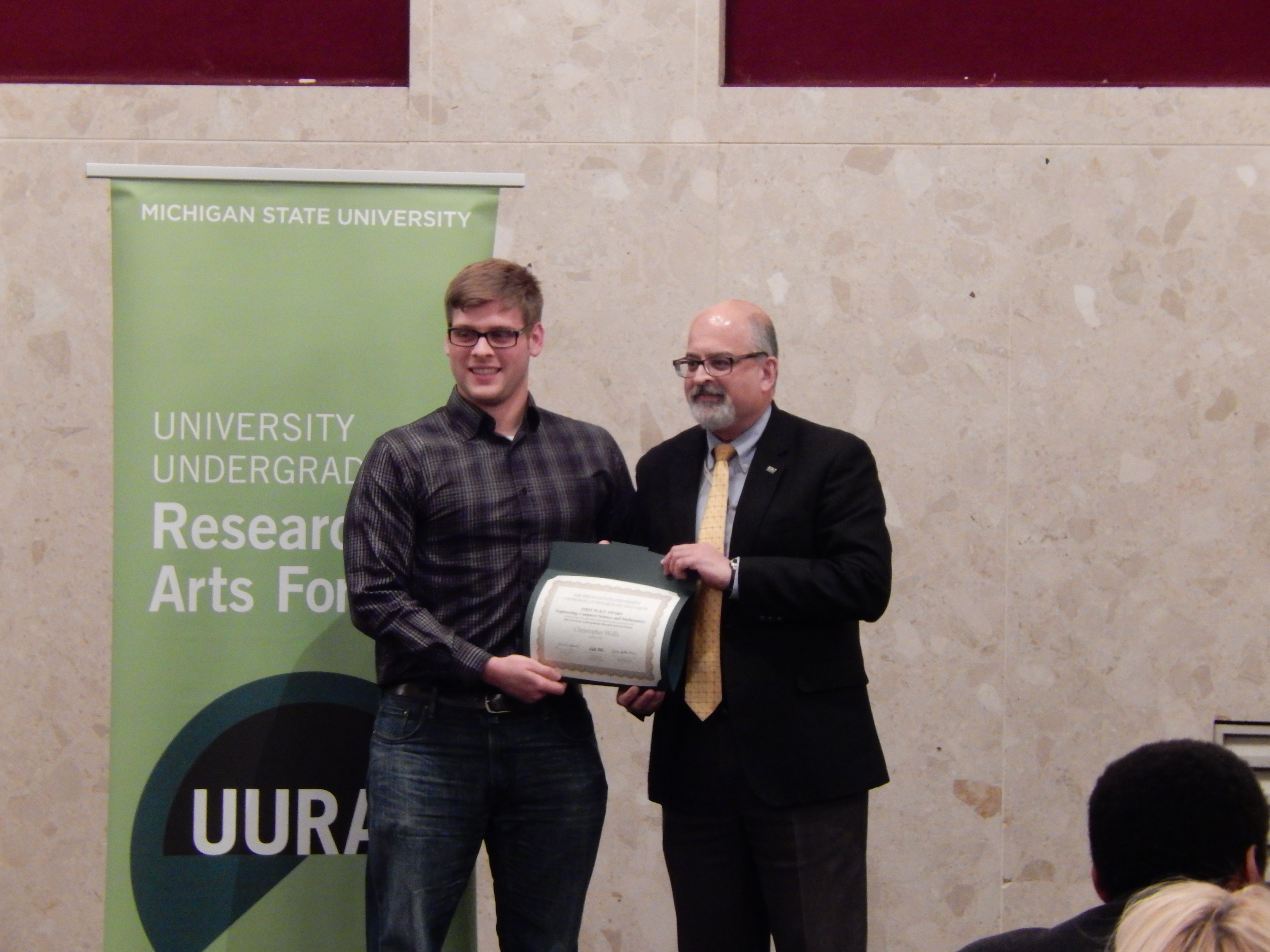First Place BE Students in 2017 UURAF
April 7, 2017

First Place BE Students in 2017 University Undergraduate Research & Arts Forum - April 7, 2017

Emily Banach - April 7, 2017, UURAF Poster Session
Analysis of Hydraulic Retention Time for Modeling Removal of Pollutants in a Bioretention Basin
Emily Banach
Mentor(s): Dawn Reinhold (Biosystems and Agricultural Engineering)
Due to their large quantities of impervious surfaces, urbanized areas experience substantial pollutant runoff into lakes and streams. Bioretention ponds are a common tool designed to combat this problem. These man-made sites naturally filter out key pollutants like COD, Nitrogen, and Phosphorous. The amount of time water spends in the system is known as hydraulic retention time (HRT), and is an important factor in proper removal of these pollutants. Using current methods, however, this parameter can only be found experimentally and, as a result, is rarely measured outside of research universities. This project uses continuous storm water data collected from pumping data at the Farm Lane bioretention site. Using this information, changes in HRT can be determined by (1) Quantifying HRT, (2) Determining HRT dependencies, and (3) Modeling a relationship between HRT and its dependencies. A tracer study will also be conducted using sodium chloride in order to verify the model. Hydraulic conductivity will be measured at various points along the retention pond.
Source: http://urca.msu.edu/files/forums/28/booklet/2017 UURAF Program Book_Digital.pdf

Click image for pdf of poster.
Dry Cross-Contamination Modes and Factors Associated With Salmonella During Almond Processing
Joanna Carroll
Mentor(s): Sanghyup Jeong (Biosystems and Agricultural Engineering)
Recently, there have been numerous outbreaks associated with Salmonella in low-moisture foods. According to the CDC, there were multistate outbreaks associated with Salmonella for pistachios in 2009 and 2016 and almonds in 2000 and 2003, which caused massive nationwide recalls. This study identifies the environmental and physical factors that affect modes of cross-contamination associated with Salmonella in order to enhance a discrete element simulation of almond processing. Almond shell pieces and kernels (200 g) were inoculated with Salmonella Enteritidis PT30. Subsequently, the inoculated kernels (5 g), shell pieces (5 g) and un-inoculated kernels (200 g) were conditioned at 0.20 and 0.40 aw, and mixed in a stainless steel drum (140 mm diameter) for a total number of rotations (TNR) of 5, 20, 40, and 80 revolutions. Thereafter, the contaminated samples (5 g) were retrieved, and enumerated for the transferred Salmonella. The maximum bacterial load transferred from shells to kernels was significantly different (P<0.05) than that of kernels to kernels for 0.2 and 0.4 aw. When comparing aw, there was a significant difference between 0.2 and 0.4 (P<0.05) for both kernel to kernel and shell to kernel. This indicates that environmental and physical factors like aw and surface structure have a significant effect on the dry transfer of Salmonella. Identifying factors affecting bacterial cross contamination modes is critical information for secondary modeling used in discrete element model simulation, which will reveal the cross-contamination pathways of Salmonella for an actual processing system.
Source: http://urca.msu.edu/files/forums/28/booklet/2017 UURAF Program Book_Digital.pdf
Click image for pdf of poster.

Christopher Wells - April 12, 2017, UURAF Awards Ceremony
Evaluating the Efficacy of Industrial Vacuum Cleaning to Remove Food Allergens from Food Contact Surfaces
Christopher Wells
Mentor(s): Sanghyup Jeong (Biosystems and Agricultural Engineering)
Allergenic cross-contamination is a growing concern in low moisture environments where water cannot be used as a cleaning resource. The purpose of this study was to determine the effectiveness of the vacuum dry cleaning method used in the food industry. Stainless steel coupons were electrostatically coated with soy protein isolate as an allergenic material. The coupons were vacuumed at about 3 mm above the surface. After 10 seconds of vacuuming followed by a brushing, the coupons were vacuumed for an additional 10 seconds, and tested for the soy allergen using Neogen 3D Reveal test kits (5 ppm detection limit). For cleaning efficacy, another set of coupons were vacuumed, submerged and agitated in 15 mL of deionized water, to measure total dissolved solids (TDS) and conductivity. The allergen tests showed 50% negative and 50% positive for soy (n=6), indicating the uncertainty of the vacuum cleaning practice for allergen removal. The mean TDS, 4.72 1.57 ppm and the conductivity, 3.7 0.5's/cm, supports the allergen test results. These results reinforce the uncertainty of determination of cleanliness based on visual inspection. Although the current industry vacuum cleaning practice is considered as an effective and practical dry cleaning method, it needs to be further validated and improved to ensure allergen free food products.
Source: http://urca.msu.edu/files/forums/28/booklet/2017 UURAF Program Book_Digital.pdf



 Print
Print Email
Email



